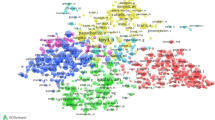Abstract
Social media has revolutionized the way information is distributed throughout society, as folks continue to rely entirely on these apps for information on current events, health protocols, and socio-political discussions. However, these containers of knowledge do not appear in the same shape for every user; Algorithms, informed by capitalist agendas, determine what information sifts through its networks and to whom. Data scientists, researchers, and activists have dissected the hidden mechanics fueling these popular platforms, inciting critical conversations around the harmful biases embedded in algorithms. These studies often skim the surface of how these algorithms digitally marginalize people of color, if acknowledging it at all. Even fewer have attempted to examine the role these algorithms play in the social activism and digital community organizing happening amongst communities of color via social media. Referring to indigenous scholar Marisa Elena Duarte’s book Network Sovereignty as a framework of thought, this paper roots itself in the notion that technology is an extension of the agenda utilizing it. Through dissecting the algorithmic structures of popular social platforms among communities of color, this paper examines how social media distributes information within its networks and how its encoded biases silence Black, brown, and indigenous voices. This paper also provides insight into how BIPOC content-creators, when informed on how the algorithms work, can use these platforms to their advantage and effectively facilitate socio-political discourse online; Changing the narrative of social networks from being yet another landscape of white supremacy to instead a communal canvas for radical change.
Similar content being viewed by others
Data availability
The author declares that [the/all other] data supporting the findings of this study are available within the article.
References
About Facebook Ads. Facebook, Facebook, https://www.facebook.com/about/ads
Agrawal P, Davis D (2020) Transparency around image cropping and changes to come. Twitter, Twitter. https://blog.twitter.com/en_us/topics/product/2020/transparency-image-cropping
Asare JG (2020) Does tiktok have a race problem?” Forbes, Forbes Magazine. https://www.forbes.com/sites/janicegassam/2020/04/14/does-tiktok-have-a-race-problem/
Brown A (2021) TikTok influencer of color faced ‘Frustrating’ obstacle trying to add the word ‘black’ to his creator marketplace bio. Forbes, Forbes Magazine. https://www.forbes.com/sites/abrambrown/2021/07/07/tiktok-black-creators-creator-marketplace-black-lives-matter/
Carville O (2020) No one fights qanon like the global army of K-pop superfans. Bloomberg.com, Bloomberg. https://www.bloomberg.com/news/features/2020-10-28/bts-k-pop-stans-are-fighting-qanon-and-maga-on-social-media
Chowdhury R (2021) Sharing Learnings about Our Image Cropping Algorithm. Twitter, Twitter. https://blog.twitter.com/engineering/en_us/topics/insights/2021/sharing-learnings-about-our-image-cropping-algorithm
Chowdhury R, Belli L (2021) Examining algorithmic amplification of political content on twitter. Twitter, Twitter. https://blog.twitter.com/en_us/topics/company/2021/rml-politicalcontent
Chowdhury R, Williams J (2021) Introducing twitter’s first algorithmic bias bounty challenge. Twitter, Twitter. https://blog.twitter.com/engineering/en_us/topics/insights/2021/algorithmic-bias-bounty-challenge
Collins B, Zadrozny B (2021) Twitter permanently suspends president donald trump. NBCNews.com, NBCUniversal News Group. https://www.nbcnews.com/tech/tech-news/twitter-permanently-bans-president-donald-trump-n1253588
Duarte ME (2017) Network thinking. Network sovereignty: building the internet across indian country. University of Washington, Seattle, pp 13–14
Faddoul M (2020) A TikTok novelty: FACE-BASED FITLER BUBBLES. https://twitter.com/MarcFaddoul/status/1232014908536938498
Forgey Q (2020) Trump threatens to unleash gunfire on minnesota protesters. POLITICO, POLITICO. https://www.politico.com/news/2020/05/29/trump-threatens-to-unleash-gunfire-on-minnesota-protesters-288406
Lozada C (2021) Review | twitter and facebook help spark protest movements. Then they undermine them. The Washington Post, WP Company. https://www.washingtonpost.com/news/book-party/wp/2017/05/25/twitter-and-facebook-help-spark-protest-movements-then-they-undermine-them/
Mosseri A (2021) Shedding more light on how instagram works. Instagram, Instagram. https://about.instagram.com/blog/announcements/shedding-more-light-on-how-instagram-works
Newton C (2018) Twitter explains why it hasn’t banned president trump. The Verge, The Verge. https://www.theverge.com/2018/1/5/16855900/twitter-donald-trump-ban-explanation
Oremus W (2017) Inside the changes that could save twitter’s business-and reshape civil discourse. Slate Magazine. http://www.slate.com/articles/technology/cover_story/2017/03/twitter_s_timeline_algorithm_and_its_effect_on_us_explained.html
Pelley S (2021) Whistleblower: facebook is misleading the public on progress against hate speech, violence, misinformation. CBS News, CBS—60 Minutes. https://www.cbsnews.com/news/facebook-whistleblower-frances-haugen-misinformation-public-60-minutes-2021-10-03/
Rosenblatt K (2021) Give Credit Where It’s Due’: Tiktoker Speaks out about Black Creator Strike.” NBCNews.com, NBCUniversal News Group. https://www.nbcnews.com/pop-culture/pop-culture-news/give-credit-where-it-s-due-tiktoker-speaks-out-about-n1272287
The Truth About Algorithms (2018) Youtube, uploaded by RSA. https://youtu.be/heQzqX35c9A
TikTok (2020) How Tiktok Recommends Videos #ForYou. Newsroom, TikTok. https://newsroom.tiktok.com/en-us/how-tiktok-recommends-videos-for-you
Timberg C et al. (2021) Inside Facebook, Jan. 6 Violence Fueled Anger, Regret over Missed Warning Signs. The Washington Post, WP Company, https://www.washingtonpost.com/technology/2021/10/22/jan-6-capitol-riot-facebook/
Whitehurst L (2021) Stigmas on Race, Gender and Sex Overlap in Atlanta Slayings. AP NEWS, Associated Press. https://apnews.com/article/us-news-race-and-ethnicity-shootings-las-vegas-mass-shooting-georgia-58690b8fd13adc6e76ef2b306fd2c58f
Williams J, Chowdhury R (2021) “Introducing Our Responsible Machine Learning Initiative.” Twitter, Twitter. https://blog.twitter.com/en_us/topics/company/2021/introducing-responsible-machine-learning-initiative
World Leaders on Twitter (2018) Twitter, Twitter. https://blog.twitter.com/en_us/topics/company/2018/world-leaders-and-twitter
Ziady H (2019) Twitter explains why it hasn.t suspended trump’s account|cnn business. CNN, Cable News Network. https://www.cnn.com/2019/10/16/tech/twitter-trump-rules/index.html
Curmudgeon Corner
Curmudgeon Corner is a short opinionated column on trends in technology, arts, science and society, commenting on issues of concern to the research community and wider society. Whilst the drive for super-human intelligence promotes potential benefits to wider society, it also raises deep concerns of existential risk, thereby highlighting the need for an ongoing conversation between technology and society. At the core of Curmudgeon concern is the question: What is it to be human in the age of the AI machine? -Editor.
Author information
Authors and Affiliations
Corresponding author
Ethics declarations
Conflict of interest
On behalf of all authors, the corresponding author states that there is no conflict of interest.
Additional information
Publisher's Note
Springer Nature remains neutral with regard to jurisdictional claims in published maps and institutional affiliations.
Rights and permissions
Springer Nature or its licensor (e.g. a society or other partner) holds exclusive rights to this article under a publishing agreement with the author(s) or other rightsholder(s); author self-archiving of the accepted manuscript version of this article is solely governed by the terms of such publishing agreement and applicable law.
About this article
Cite this article
Matthews, A. Sculpting the social algorithm for radical futurity. AI & Soc 39, 75–86 (2024). https://doi.org/10.1007/s00146-023-01760-8
Received:
Accepted:
Published:
Issue Date:
DOI: https://doi.org/10.1007/s00146-023-01760-8




